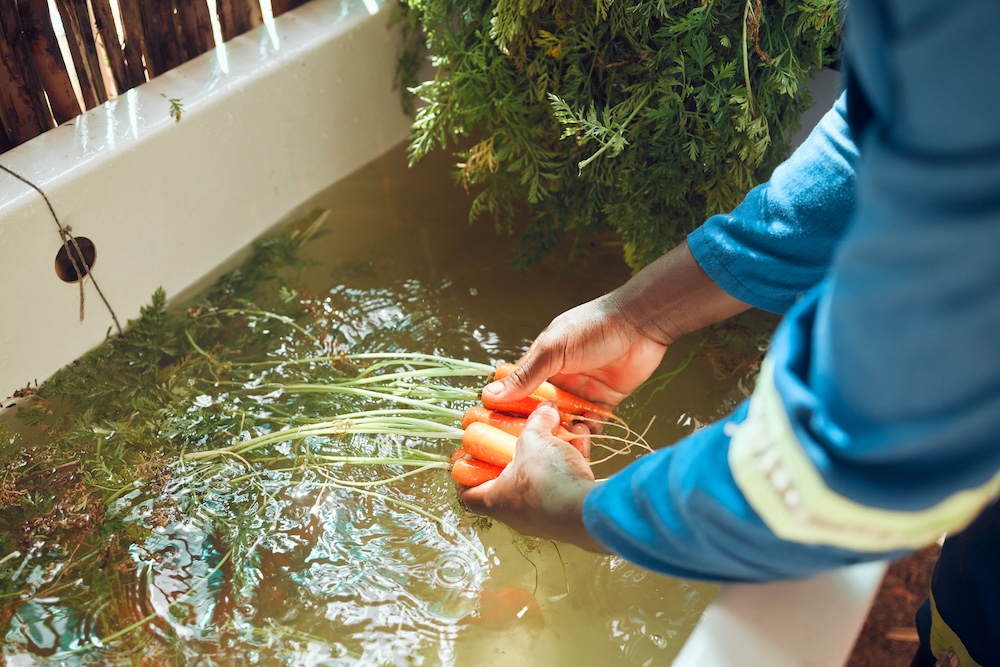Greywater systems may start with pipes and pumps—but they flourish through practice. If you’re already collecting water from your shower, laundry, or sink, you’re well on your way. But the real magic of greywater lies not just in setup, but in how it changes your habits, priorities, and relationship with resources over time.
This guide explores what it’s really like to live with greywater. From daily routines to seasonal tweaks, it offers actionable tips and reflections to help you feel more confident, comfortable, and connected in your water-wise lifestyle.
Shifting the Mindset: From Waste to Resource
Most homes treat used water as trash. The moment it goes down the drain, it’s gone. Greywater living flips that mindset on its head.
- You begin to see water as a cycle, not a single-use commodity
- You start choosing products that support soil and plants, not just personal care
- You notice patterns in where and how water flows through your life
- You feel more self-reliant, thoughtful, and intentional
This isn’t about sacrifice—it’s about satisfaction.
Daily Habits That Make Greywater Simple
Greywater doesn’t require major lifestyle changes, just a few small shifts that quickly become second nature.
Use Plant-Safe Products
- Choose biodegradable, sodium-free, and low-phosphate soaps and detergents
- Avoid anything with bleach, boron, or synthetic fragrances
- Look for labels that say “greywater safe” or “safe for septic systems”
Tip: Many greywater users find these products gentler on their skin and health, too.
Collect with Intention
- Use a shower bucket to catch warm-up water or rinse runoff
- Keep a dedicated container near the sink for rinse water or veggie washing
- Empty your buckets within 24 hours to avoid odors or bacteria
Observe Water Use
- Notice which sinks or appliances generate the most reusable water
- Pay attention to soap residues—do they leave film or foam in the bucket?
- Watch how plants respond—some love greywater more than others
Tip: Make it a family or household habit—kids often enjoy helping water plants!
Irrigate with Awareness
- Rotate watering zones to prevent oversaturation
- Use mulch basins or gravel trenches to avoid pooling
- Adjust flow based on seasons—more in summer, less in wet or cold periods
Greywater in the Real World: What to Expect
The Learning Curve
Your first few weeks may feel experimental. That’s okay.
- You might forget to grab the bucket at first
- You’ll try different soaps to find the best plant-friendly match
- You’ll learn what works for your yard’s layout and drainage
Stick with it—within a month or two, greywater feels like second nature.
It’s Not Gross—It’s Just Water
Many people are surprised by how clean greywater looks and smells—especially from showers or laundry. Once you trust the process, the “ick factor” disappears.
What helps:
- Clear buckets or containers so you can see what’s inside
- Rinsing out buckets between uses
- Using fresh greywater—don’t store it longer than a day
It Builds Resilience
Living with greywater makes you more aware of resource flows in general—not just water, but energy, waste, and time.
- You become more intentional with usage
- You see the beauty in systems that support life
- You become less dependent on infrastructure that may not always be reliable
Seasonal Greywater Living
Spring & Summer
- Peak watering season—maximize greywater to reduce irrigation costs
- Use mulch to retain moisture
- Increase soap checks—some plant sensitivities show more in hot months
Fall & Winter
- Reduce or pause greywater use during freezes (or use indoors for flushing)
- Transition to using more compost and mulch for soil health
- Clean out filters or lines before winterizing
Common Greywater Lifestyle FAQs
Will I feel like I’m giving something up?
Not at all—most users report feeling empowered, not restricted. It’s about making water work twice, not doing without.
Is greywater hard to maintain?
No—basic systems need only routine filter checks, line flushing, and soap awareness. It’s as easy as managing a garden hose.
Will guests or roommates find it weird?
A simple explanation—“We reuse clean water from the shower to water the garden”—is usually met with curiosity and respect.
Do I have to change everything I use?
Start with soaps and detergents. Gradually shift toward more natural products as you find what works best.
What if my plants don’t respond well?
Adjust your watering schedule, rotate zones, and test different products. Most hardy plants thrive on greywater once the balance is right.
Final Thoughts: Let the Water Teach You
Living with greywater is more than a plumbing decision—it’s a lifestyle grounded in respect for resources, rhythms, and relationships. It invites you to be present with how your home works, how your garden grows, and how you can shape sustainability without stress or sacrifice.
Start small. Be curious. And let each drop of reused water remind you that living in balance isn’t just possible—it’s deeply rewarding.









Reader Interactions